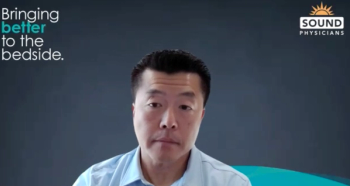
Dr Richard Feifer Explains Implementing VBID at a Company
Most employers now understand what value-based insurance design plans are, but they now have to explain it to their employees, according to Richard Feifer, MD, MPH, chief medical officer and national medical director for national accounts at Aetna, at the Value-Based Insurance Design Summit at the University of Michigan.
Most employers now understand what value-based insurance design plans are, but they now have to explain it to their employees, according to Richard Feifer, MD, MPH, chief medical officer and national medical director for national accounts at Aetna, at the Value-Based Insurance Design Summit at the University of Michigan.
Transcript (slightly modified)
When you sit down with employers, do they know and understand terms like “value-based insurance design” and “clinical nuance”?
There is great diversity among the employer community and many of them have heard the term VBID, value-based insurance design, or value-based benefit design, and they understand that it means something to do with charging people, consumers, members, their employees less for healthcare services.
Clinical nuance is a new term. Most of them haven’t heard about it or certainly don’t understand it. And I think we are trying to understand: what does it really mean to have clinical nuance. Is it that the service level or drug, is it at the diagnostic level or is it at the indication level—why is someone receiving a service for their condition? And so there is a lot of education that is underway right now.
When implementing VBID plans, how can employers explain the nuances of these plans and how they will impact employees differently?
Benefits offices at large employers are understaffed and they are becoming increasingly understaffed. Less staff, more challenges, more problems, more things to deal with as we have all sorts of pressure on them. And so benefits offices are always looking for good solutions that are administratively simple, and straight forward to communicate.
Communicating with employees is not an easy thing. There is a certain bandwidth. And oftentimes good ideas get shelved for a period of time because there is only so much benefits offices can really handle. They need simple solutions to administer and easy to communicate. The more they confuse their employee base, they more they have to explain things later, or respond to questions or concerns, or complaints, the more of a challenge they’re going to have.
So upfront, when a benefits office is making a decision to adopt or not adopt a solution, all that calculation is going through their mind.
Newsletter
Stay ahead of policy, cost, and value—subscribe to AJMC for expert insights at the intersection of clinical care and health economics.









































